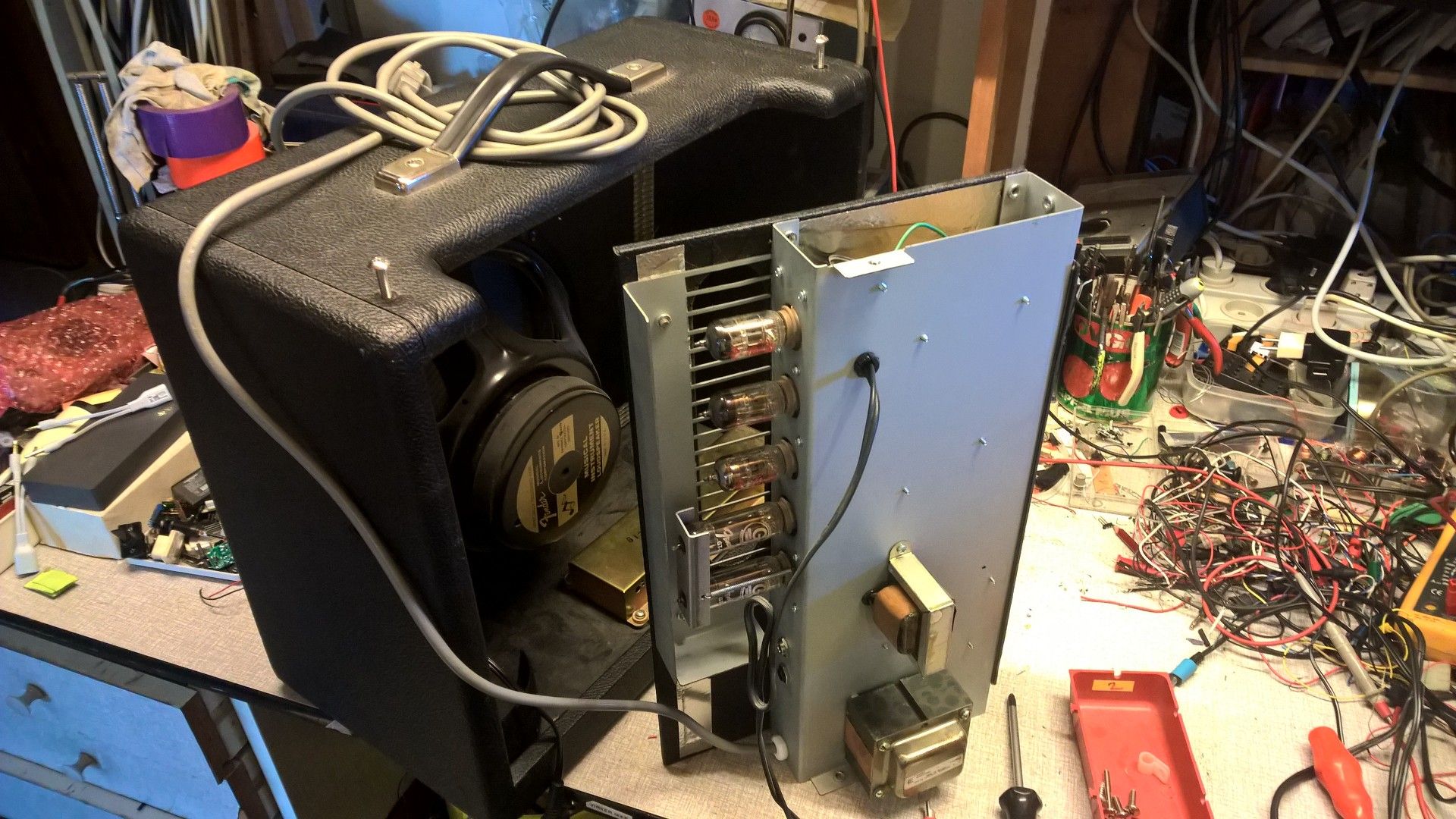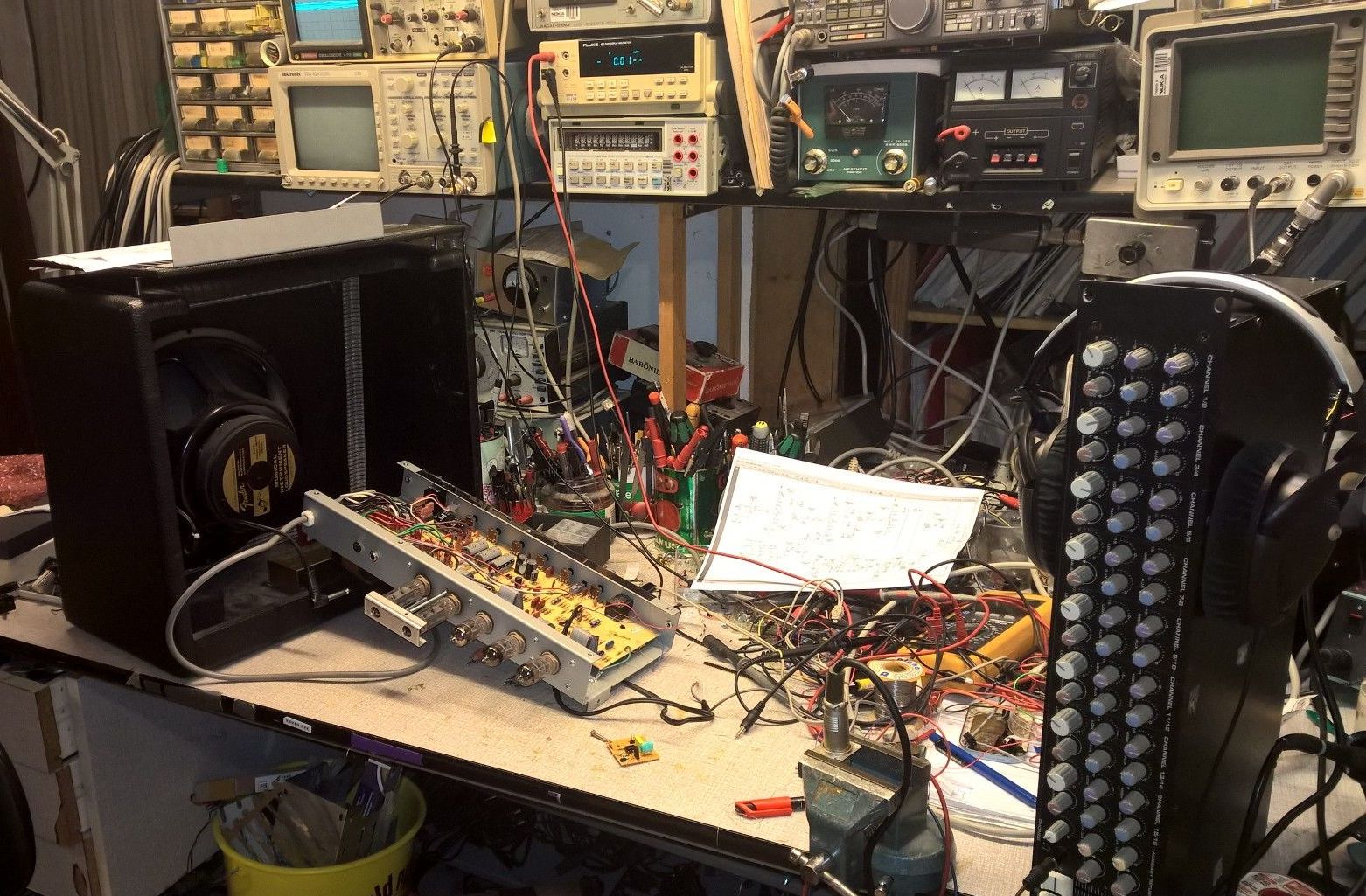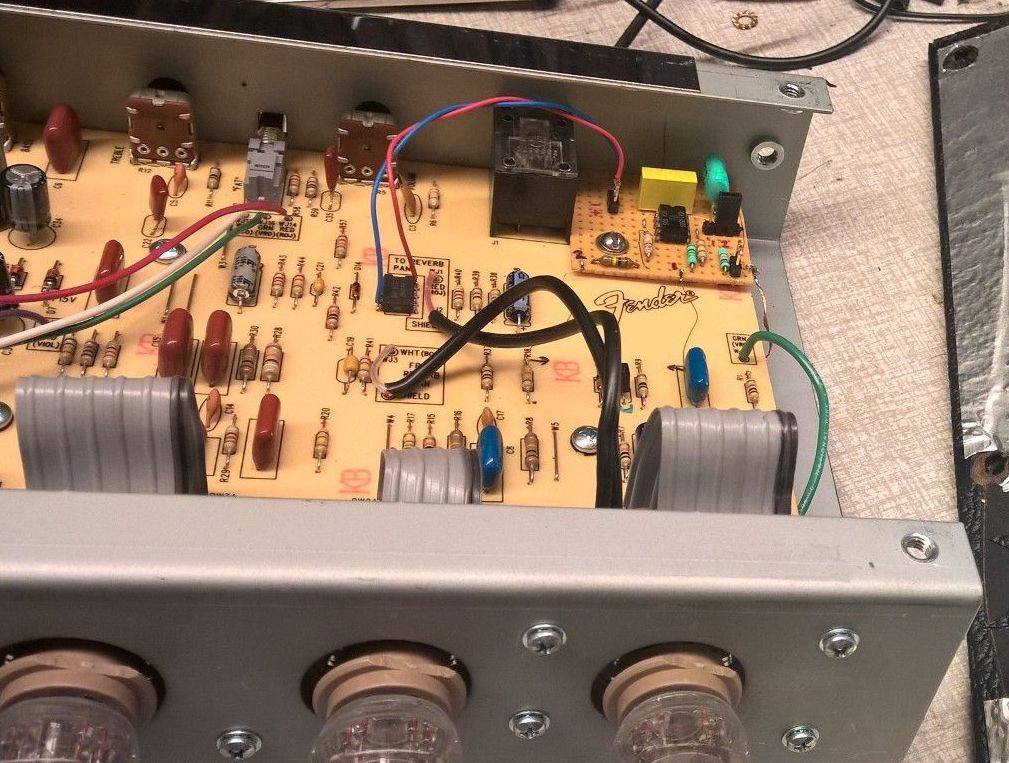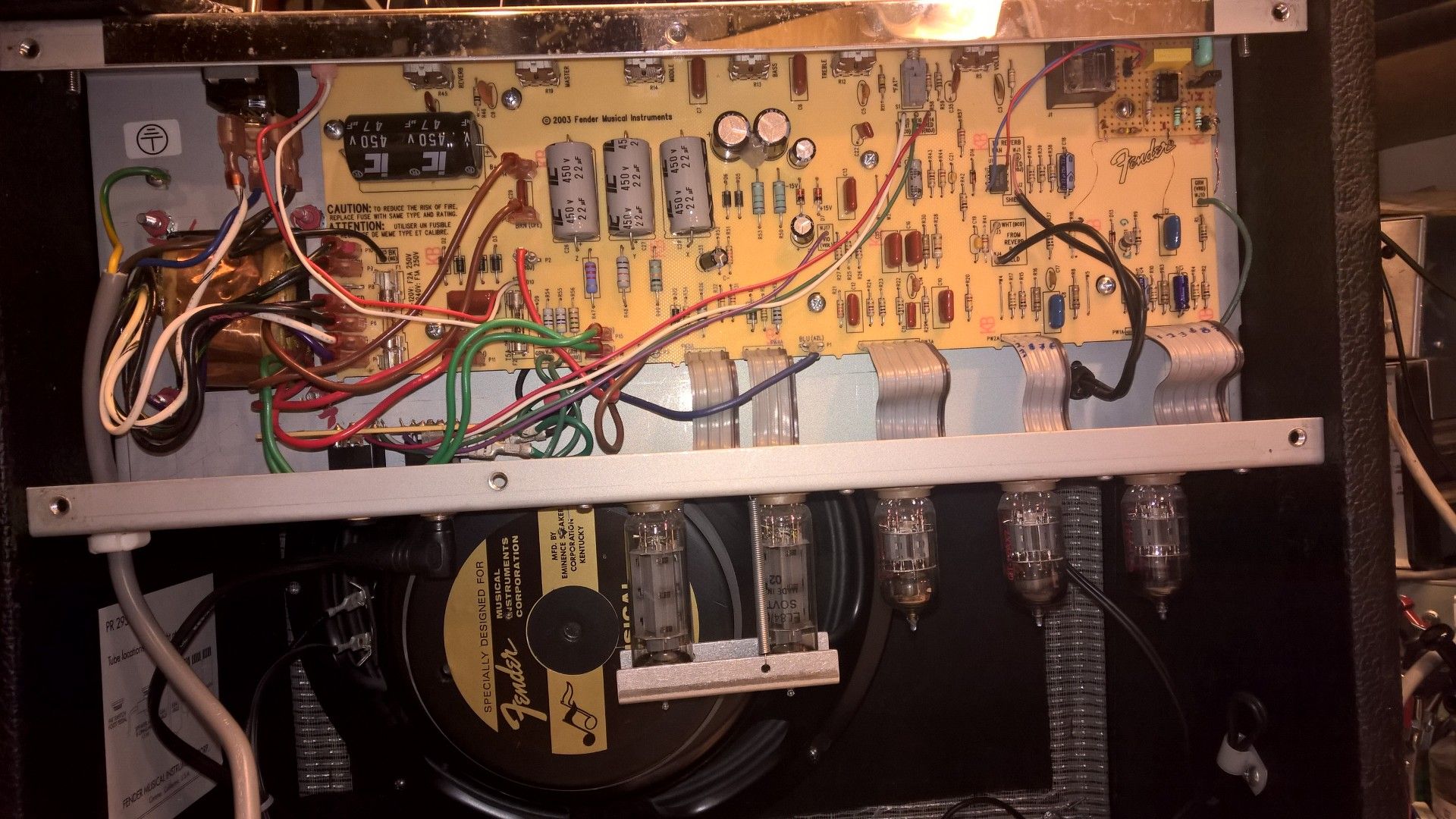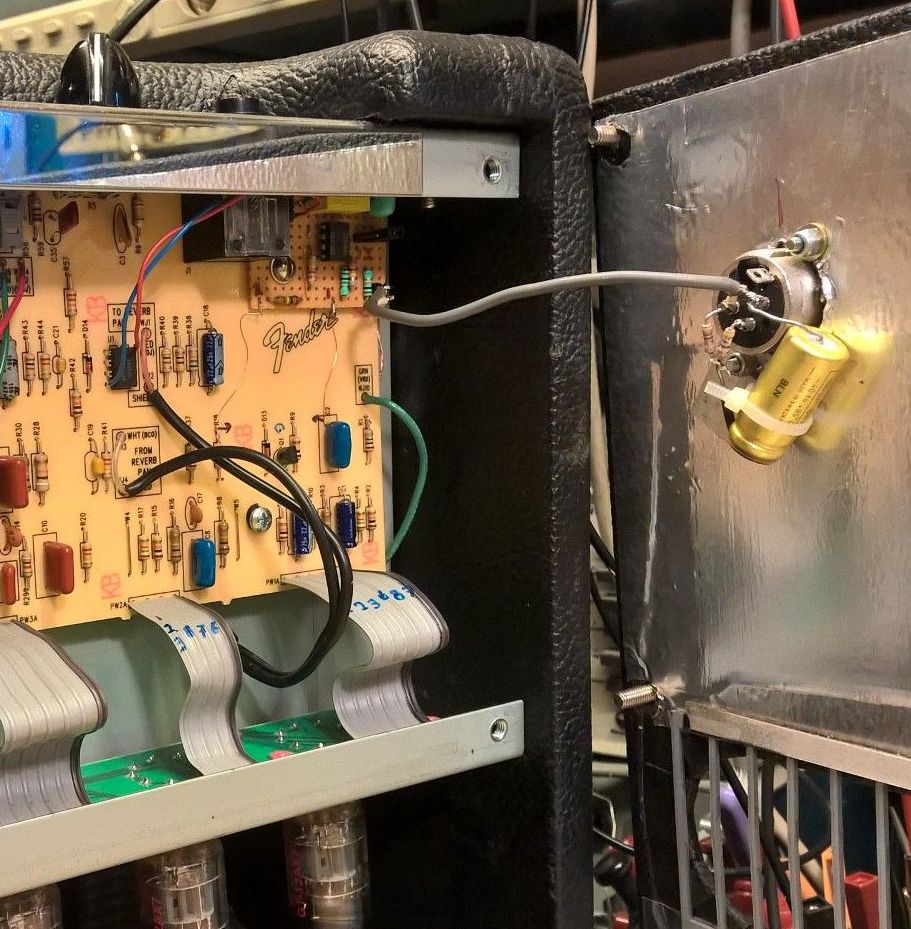modifying a tube amp!. .
It is easy to modify a guitar amplifier so it can be connected to a mixer or sound system.
The following description shows how to establish an XLR connector on the back of a guitar amp, that connects to a microphone input of a mixer.
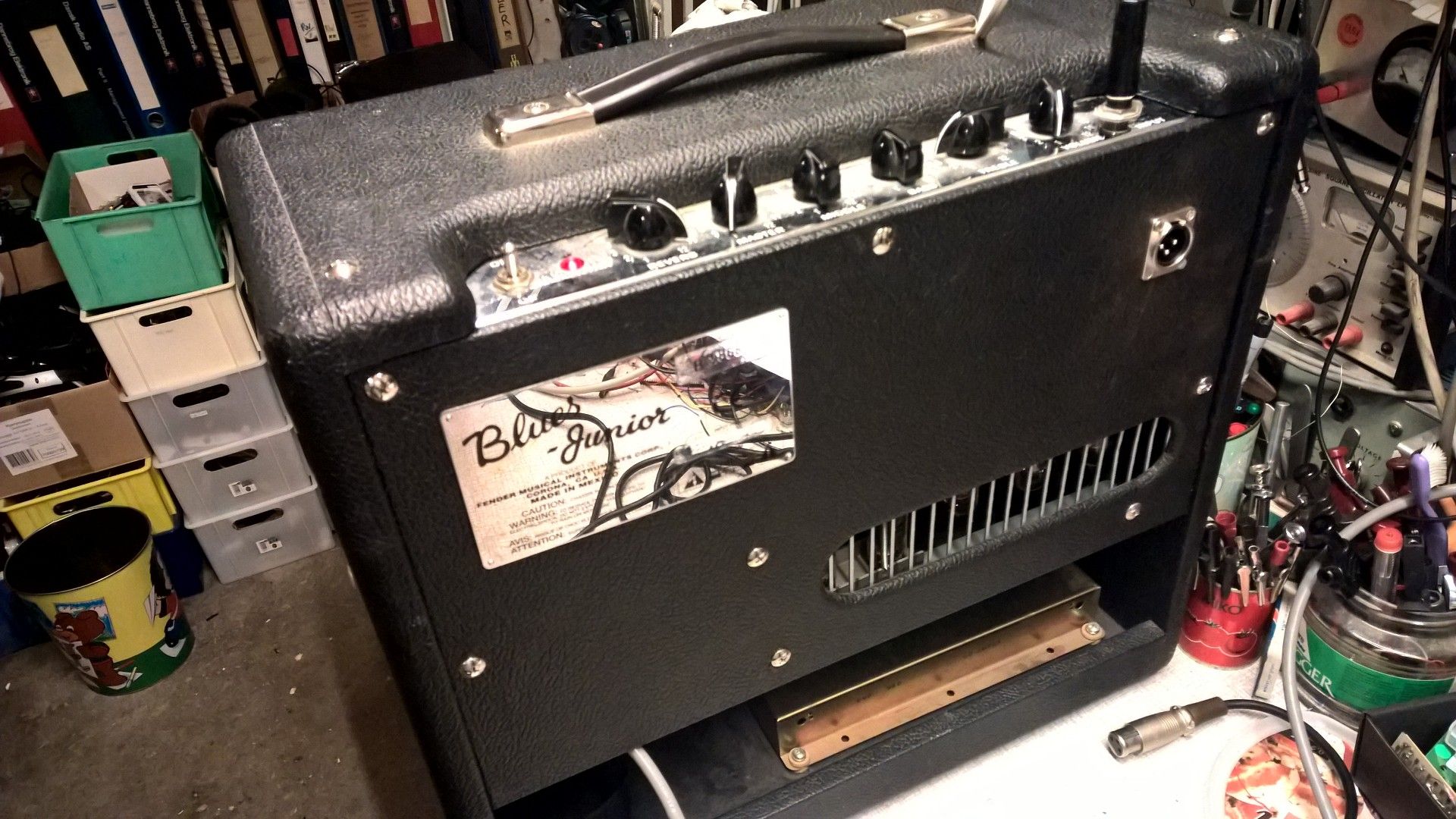
The official service manual can be downloaded here. It has the schematics and the component placement.
After studying it, it was decided to add an opamp because the points where the signals have to be taken from are quite high-impedance.
Also, there should be the possibility to either take the signal directly after the preamp or after the volume- and tone-control.
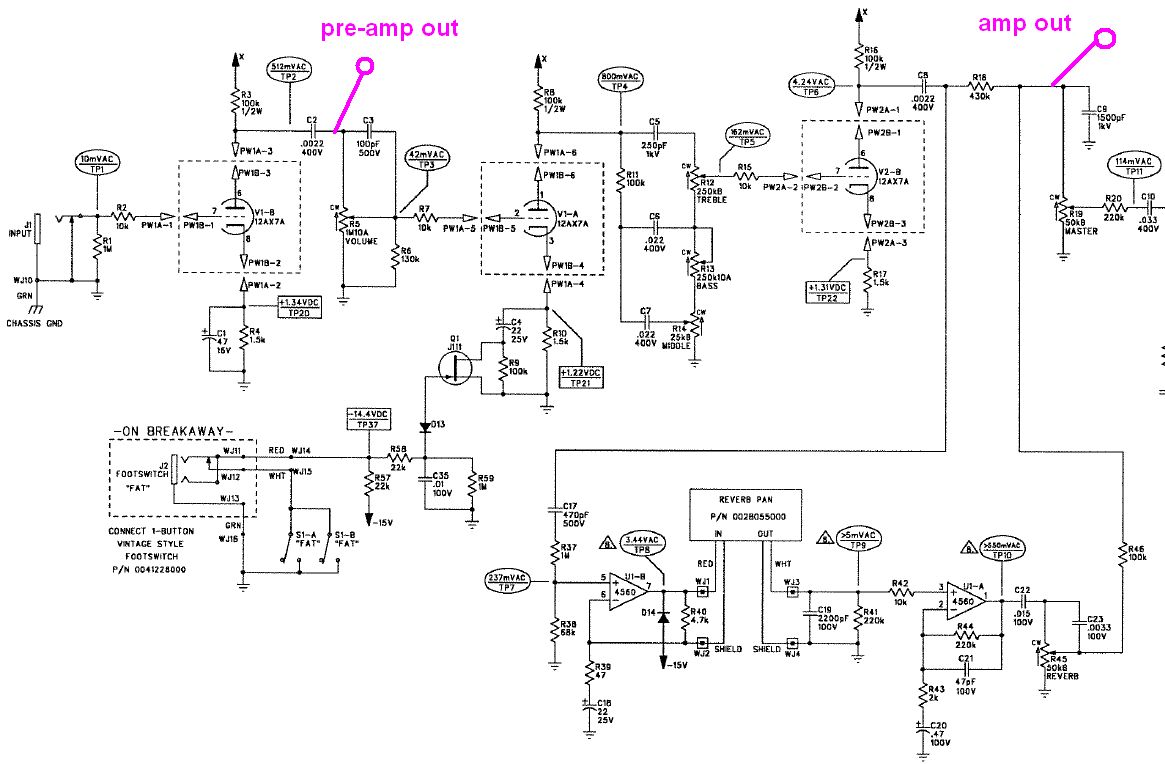
The following schematic shows the final solution.
The block-diagram of the Fender Blues Junior is included in the upper half of this picture to illustrate the points where the signal is taken from:
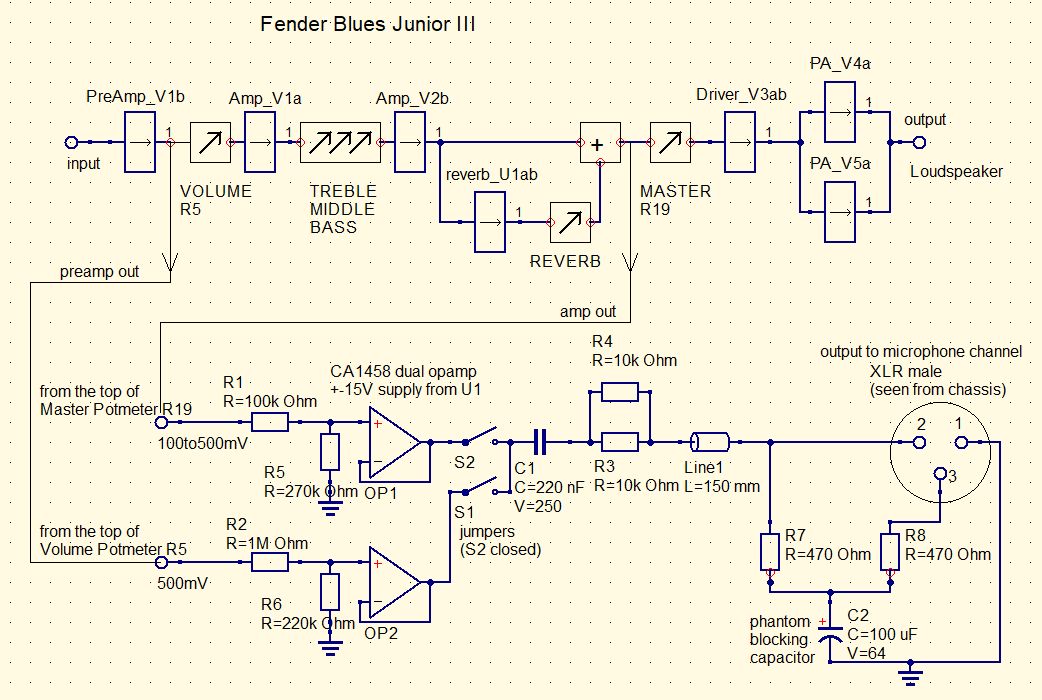
The aim was to make a balanced output with a microphone-level output signal, which means approx 5mV.
The balanced output can easily be accomplished by mounting two small resistors from XLR pin 2 "hot" and 3 "cold" to ground, and connecting the signal through a much higher value resistor on one side. This high value also has the following functions: 1) it is a voltage divider that attenuates noise from the opamp. 2) it protects the opamp from damage by voltage surges coming from anything connected to the output connector.
This high value resistor should be at least 10 times bigger than the output balancing resistors. In that way the signal itself is not balanced but that doesnt matter as long as the impedance is balanced (needed to suppress common-mode hum and noise from a possibly very long cable to the mixer input).
The output resistors have to be max 1kOhm/2 in order to have the same output impedance as a microphone. They cannot be connected directly to ground, as the microphone input from a mixer has a common-mode 48V Phantom power voltage, thus a ground capacitor (C2) is needed. It must cope with the 48V DC voltage from the Phantom, without generating leakage noise. Also, it should have a big capacitance value as otherwise the output impedance at low frequencies would be high and thus the whole system would be more susceptable for hum. A critical component! I used a 100uF/64V cap, and that gives a low-frequency cutoff of 1/(2*pi*0.5R*C)=6.6Hz which should be sufficient.
The output capacitor C1 must also block the 48V, but it can have a much lower capacitance as the impedance here is much higher because of the series resistor R3. I used a 220nF cap, which gives a low-frequency cutoff of 1/(2pi*220nF*10kOhm)=70Hz. By the way, I later added R4 in parallel to get a bit more output, so R=10k/2=5kOhm and the cutoff thus more like 140Hz, but that was still OK for guitar sound.
The inputs of the opamps have resistors that set the gain in order to get approximately the same output level for both the preamp and the amp signal, when the Volume control is set in middle position.
